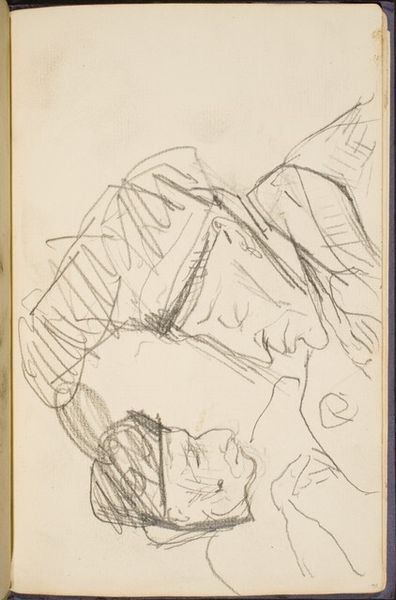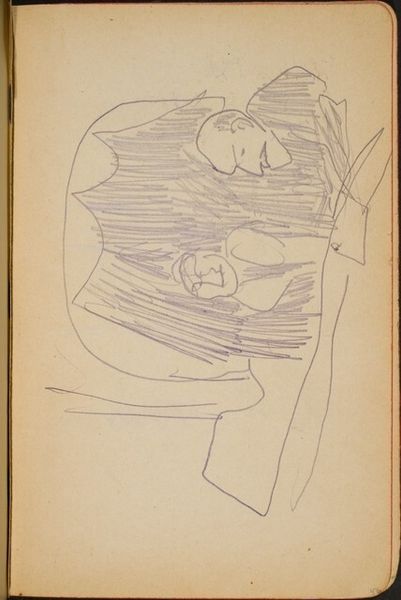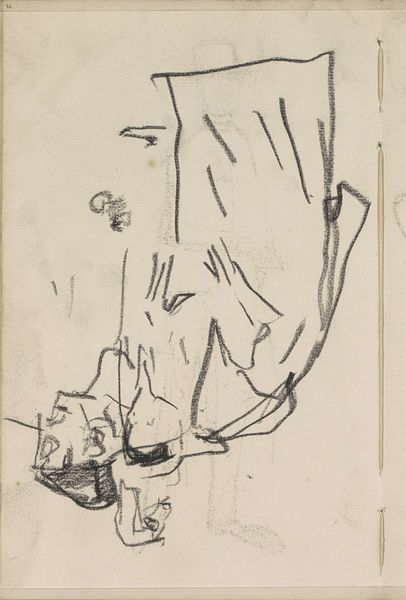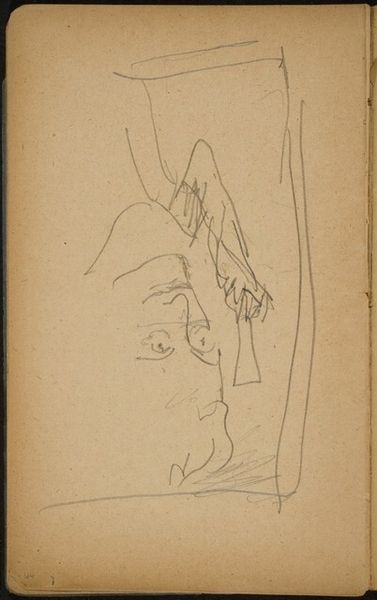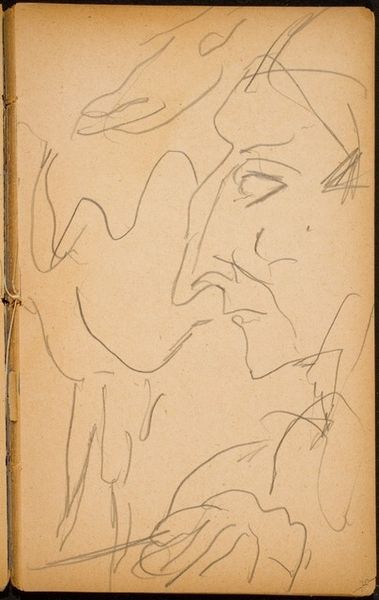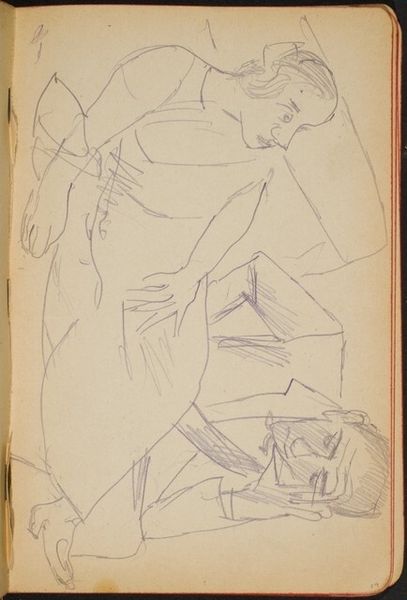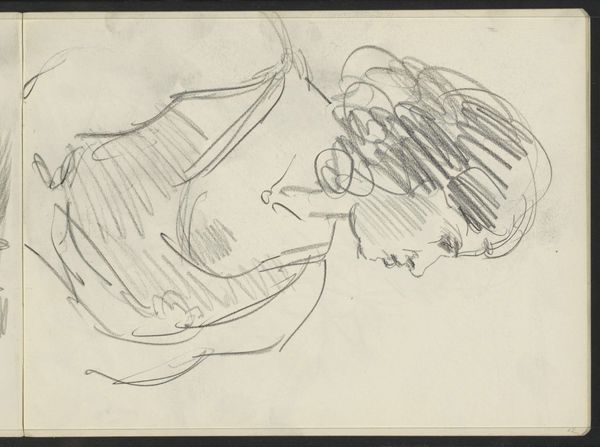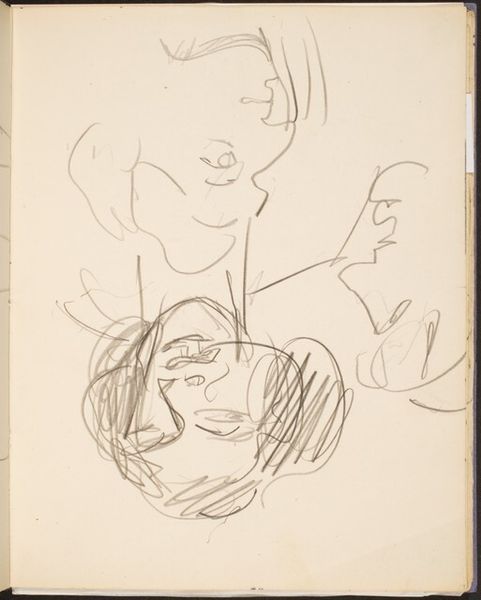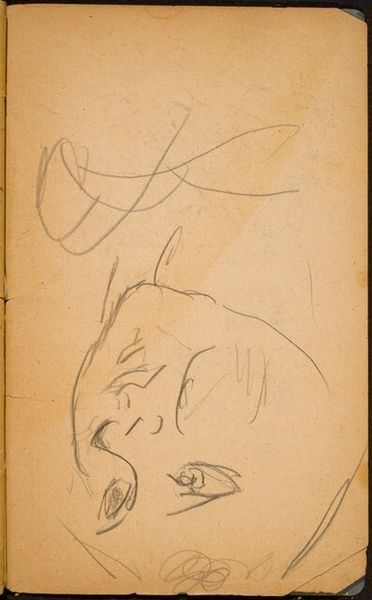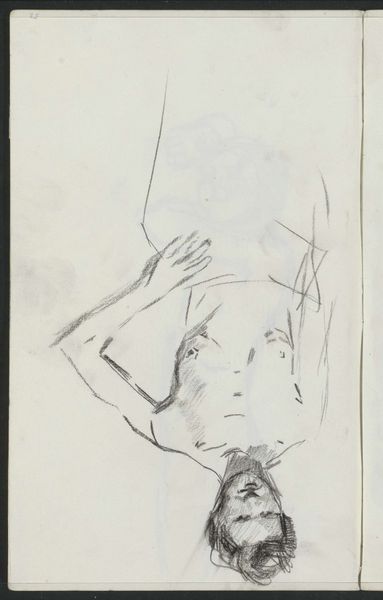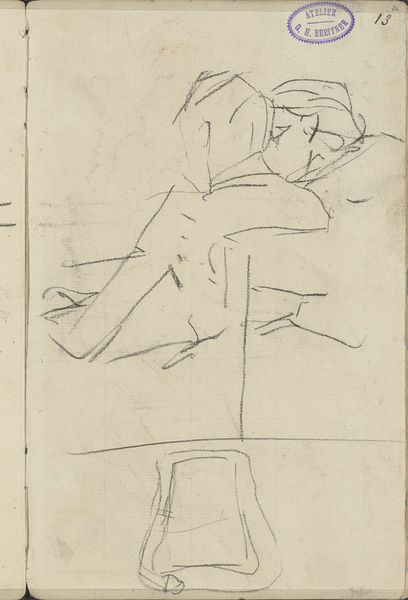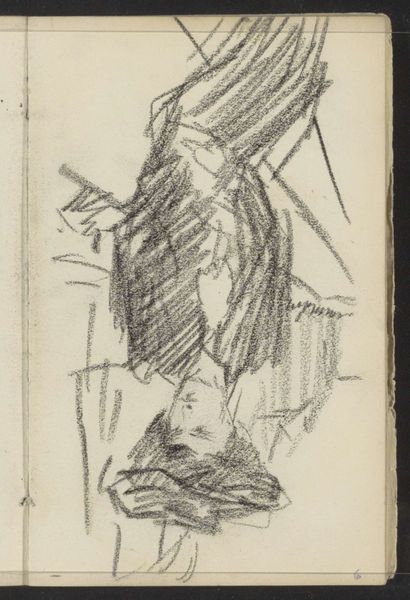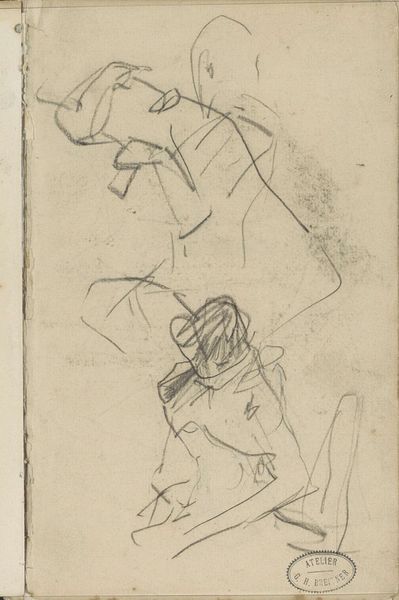![Drei Figuren (Three Figures) [p. 60] by Max Beckmann](/_next/image?url=https%3A%2F%2Fd2w8kbdekdi1gv.cloudfront.net%2FeyJidWNrZXQiOiAiYXJ0ZXJhLWltYWdlcy1idWNrZXQiLCAia2V5IjogImFydHdvcmtzLzA5ODRlODNkLTYxYTQtNGJmOC04OWE0LTQ1NjMyNjMxYzYyMC8wOTg0ZTgzZC02MWE0LTRiZjgtODlhNC00NTYzMjYzMWM2MjBfZnVsbC5qcGciLCAiZWRpdHMiOiB7InJlc2l6ZSI6IHsid2lkdGgiOiAxOTIwLCAiaGVpZ2h0IjogMTkyMCwgImZpdCI6ICJpbnNpZGUifX19&w=828&q=75)
drawing, pencil
#
portrait
#
drawing
#
pencil
#
expressionism
Dimensions: page size: 16.3 x 10 cm (6 7/16 x 3 15/16 in.)
Copyright: National Gallery of Art: CC0 1.0
Curator: Editor: Here we have Max Beckmann's pencil drawing "Drei Figuren (Three Figures)." It seems very immediate, almost like a study, with this quickly sketched character, all angular and confrontational, surrounded by floating hands. How should we interpret the context and processes surrounding a piece like this? Curator: As a drawing, it offers immediate access to Beckmann's hand, his process. The work's power isn't about refined technique, but about direct material expression. I’m intrigued by the social context: consider the paper, the pencil, and their availability during the periods surrounding expressionism. Are these simple tools belying the social standing of the artist, or the subjects represented? Are we meant to question their means of production and the labour involved? Editor: That’s fascinating. I hadn't considered the socio-economic implications of the materials themselves! Do you think Beckmann was purposefully making a statement with his choice of tools, opting for the humbleness of graphite on paper versus, say, painting? Curator: Perhaps, but maybe this piece is not complete within itself. It's hard to ignore that this drawing is page 60 of a sketch book; that Beckmann used accessible, inexpensive materials, suggests the piece served as an exercise or study of people and spatial dynamics for painting or printmaking. The artist perhaps valued practice as paramount. Where the sketchbook exists in relation to the 'final product' might inform our view of the drawing’s purpose and 'art' status. Editor: That does change how I see it. Thinking of this less as a finished "art" piece and more as part of the larger labor and artistic practice gives it so much more context. Curator: Exactly. By understanding the material conditions and production context, we understand the artwork’s relation to the culture that created it. Editor: So, by looking closely at something as basic as the medium, it can completely change the meaning of the art itself. This gives a new appreciation for Beckmann’s works. Curator: Indeed! It's crucial to see how even simple materials are laden with social significance and contribute to a richer understanding of the art object.
Comments
No comments
Be the first to comment and join the conversation on the ultimate creative platform.
